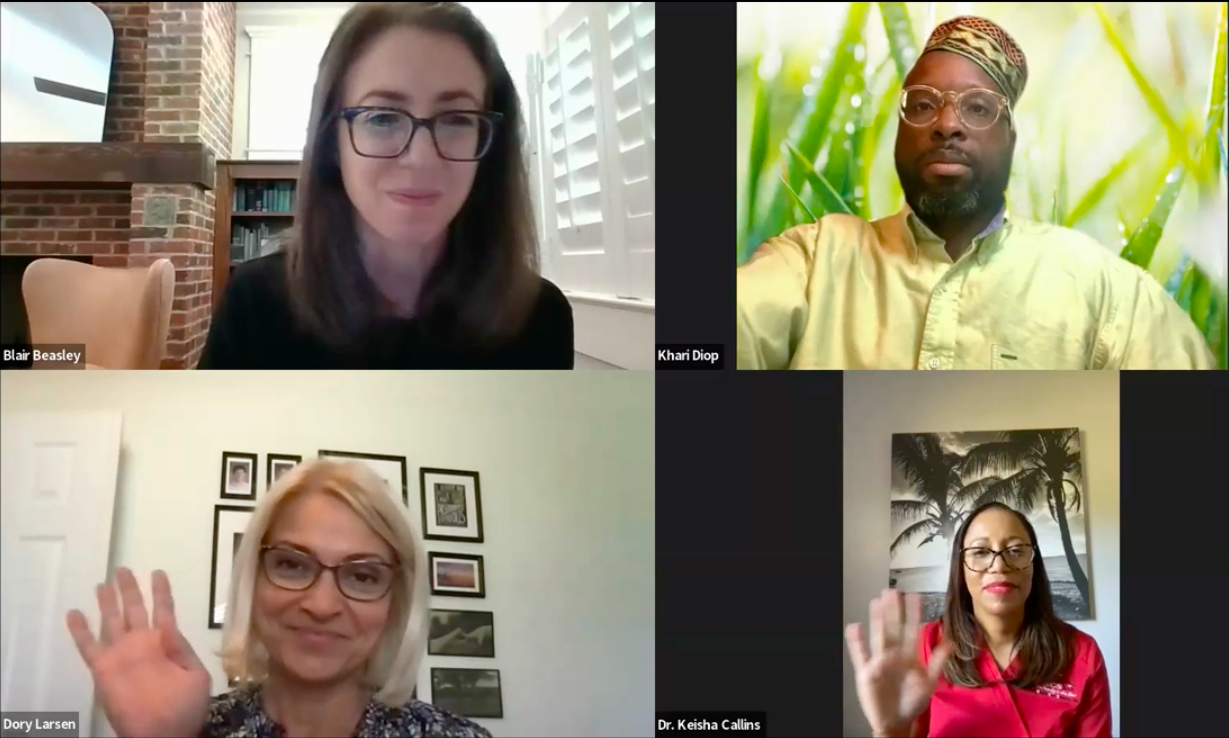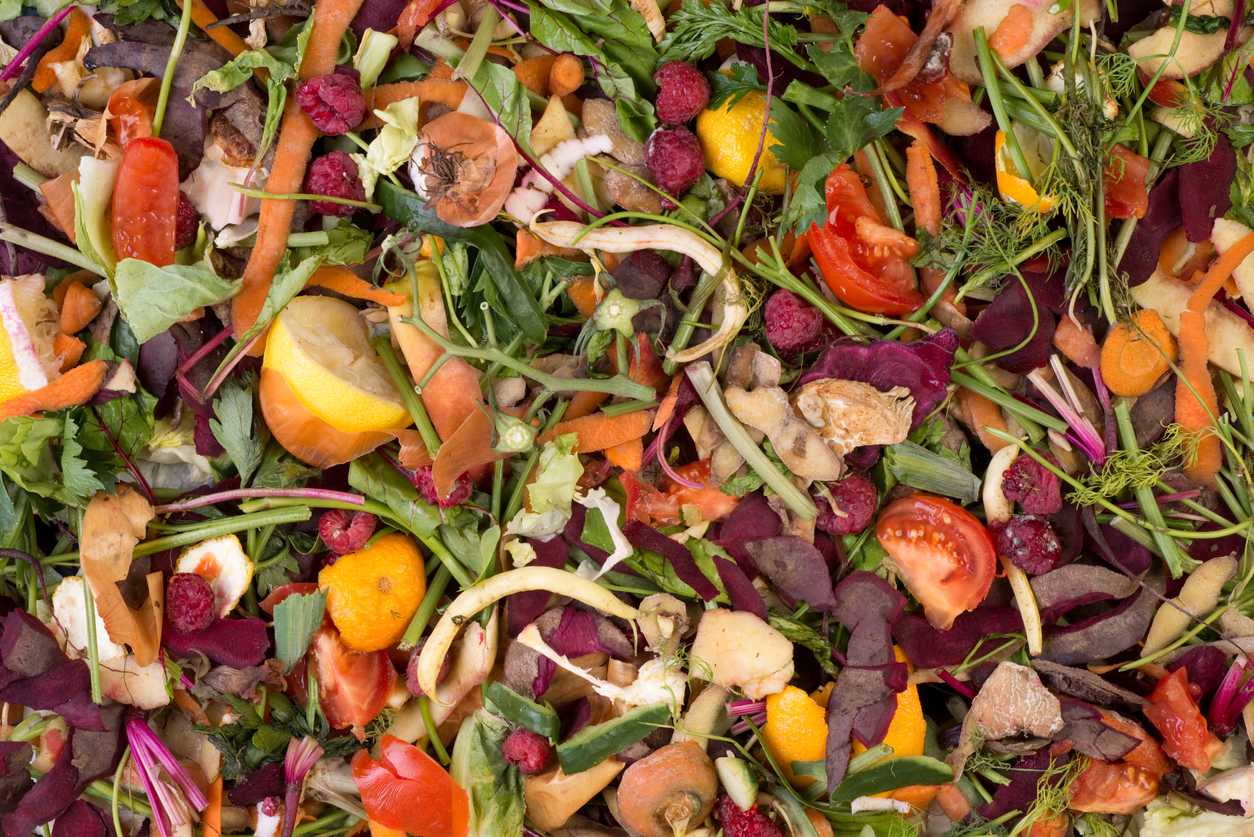There are so many ways you can take action to reduce the emissions that each of us produce in our everyday life. From eating less meat to upgrading to an electric vehicle (EV) to starting a compost pile in your backyard, you can join Drawdown Georgia in bringing climate solutions home--and we’ve got the toolkits to help you.
The following is a recap of a lively conversation among a few of the experts behind our series of climate solutions toolkits that answers many common questions about the everyday climate solutions that are best suited to Georgia.
Everyday Climate Solutions: Tools to Help You Take Action at Home
Three panelists each unpacked a climate solution related to their individual areas of expertise:
-
Dr. Keisha Callins, obstetrician/gynecologist, Community Health Care Systems
-
Khari Diop, community compost lab manager for Truly Living Well Center for Natural Urban Agriculture
-
Dory Larsen, Electric Transportation Program Manager at the Southern Alliance for Clean Energy
Join the conversation by watching the video embedded above, or read on to learn about the changes you can make - including small, simple ones - that can have a meaningful impact on emissions in our state.
Reduce Your Transportation Carbon Footprint: How to Switch to an Electric Vehicle
Dory Larsen opened the conversation by introducing the work that the Southern Alliance for Clean Energy (SACE), a regional leader advocating for equitable and responsible energy choices in the Southeast, is doing to help transform the way we produce and consume energy.
Noting that the transportation sector overtook the energy sector as the largest contributor of carbon dioxide pollution in the United States in 2017, Larsen emphasized the impact that EVs can have on reducing emissions.
EV Ownership: An Overview
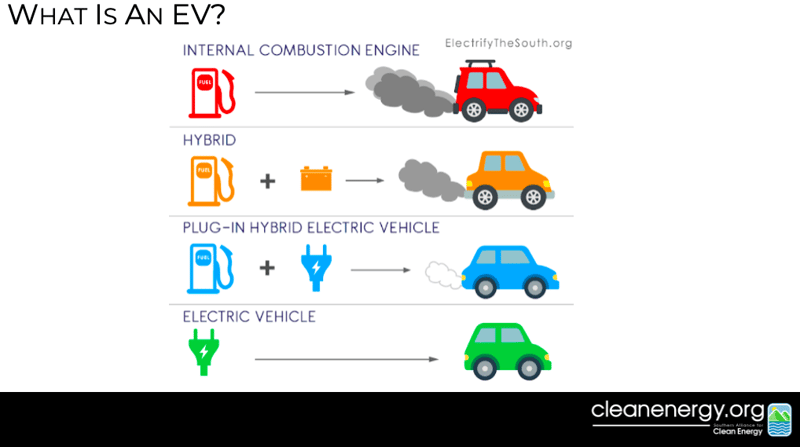
Plug-in electric vehicles are a category of vehicles that includes both plug-in hybrid vehicles (shown above in blue) and battery electric vehicles (shown in green). While the initial cost of an electric vehicle can be greater than a gasoline-powered car or truck, the benefits of upgrading add up quickly:
-
EVs are low maintenance, particularly all-electric vehicles, as they don’t require oil changes.
-
Most EV owners charge their cars overnight in the garage, making it even more convenient than having to stop for gas.
-
They're also very safe, quiet rides that have instant torque, giving them a “get up and go” that makes EVs a lot of fun to drive.
How Electric Vehicles Can Save You Money
Prices for EVs are dropping, and when the total lifetime ownership cost is taken into account, owning, operating, and maintaining an EV will often save you money compared to a conventional car or truck. The Inflation Reduction Act has extended tax credits for up to $7,500 for a new EV for the next ten years.
Fueling costs are also much lower than a traditional internal combustion vehicle. So people frequently ask, what will it do to my power bill? Larsen noted that it costs $40 to $45 to drive an EV a thousand miles, which is an average month's worth of driving, while gas costs are triple that amount.
Electric Vehicles are Cleaner than Gas-Powered Cars
There is a persistent myth that EVs are just as dirty as driving conventional cars, but as the graph below illustrates, in Georgia, the average electric vehicle produces under 20% of the emissions of a gasoline vehicle. Even if your electricity mainly comes from coal-fired power plants, it still reduces emissions by 31% compared to gasoline vehicles.

The main reason for that is because EVs are so much more energy efficient. Only about 20% of the gasoline that's pumped into a car actually powers the car, but the inverse is true for electric vehicles: about 80% of the electrons make the car go. As a result, you're using a lot less energy to get from point A to point B, creating a whole lot fewer emissions in the process.
The other significant source of pollution and emissions related to EVs comes from manufacturing the battery, the energy equivalent of about 74 gallons of gasoline. So it doesn't take very long before you're carbon neutral with the battery.
The supply chain for combustion vehicles is so dirty that electric vehicles are cleaner, even when you factor in indirect emissions. We can also recycle up to 95% of the minerals and other components of the battery. As we're scaling up the number of EVs being built, it is going to become imperative that manufacturers use recycled components to make EV manufacturing cheaper, cost effective and less environmentally impactful.
How to Charge an Electric Vehicle
There are currently three options available for charging EVs:
Level one charging, or trickle charging, adds about five miles of range per hour of charging. So if you charge overnight, you can typically replenish what you've used in a day's worth of driving. Level one charging can be achieved using a regular 110v outlet in your home or garage.
Level two charging allows about 25 to 60 miles of charging per hour and is commonly available at the charging stations that you find around town. Some EV owners choose to install a charging station at their home. DC Fast charging is the type of charging that you find along highways, and it allows you to recharge approximately 80% of the battery in a half an hour. Those charge times are getting faster as the technology is improving as well.
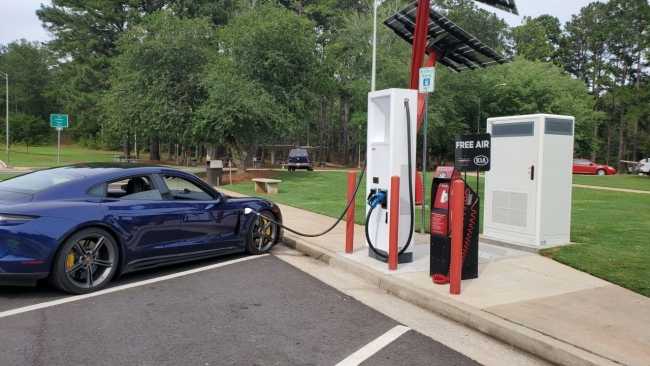
Finding charging locations that are compatible with your EV is also getting easier with the use of smartphone apps. Larsen recommended Plug Share, which allows users to filter by the type of car you have, and by the type of charging that you're looking for.
Tax Credits and Owning vs. Leasing an EV
There are a number of tax credits and rebates available related to electric vehicles. These include credits for:
-
the purchase of certain new EVs. Currently, there are 22 electric vehicles that qualify, both plug-in hybrid and fully electric, for those tax credits.
-
the purchase of a used electric vehicle.
-
installing charging stations at your home or business.
If the model you’re looking at doesn’t qualify for the tax credit, then leasing may be a good option, as this would qualify you for the commercial vehicle tax credit, which could be passed on to you by the dealer.
>>Learn more about how to upgrade to an EV in Georgia with our free toolkit
Reduce Your Food-Related Carbon Footprint: How to Compost at Home in Georgia
Khari Diop provided an overview of home composting as a climate solution that can help mitigate the harmful gasses that are produced when we put our food scraps in the trash and send them to the landfill.
The Natural Composting Process
Composting is a natural process of recycling organic matter. In the same way that we recycle glass, paper, and aluminum cans, composting takes the idea of recycling to the next level by recycling our organic waste. Everything that grows will eventually decompose; when we compost, we become involved in that natural process and help speed it along by providing the ideal environment for the microorganisms to break down organic matter.
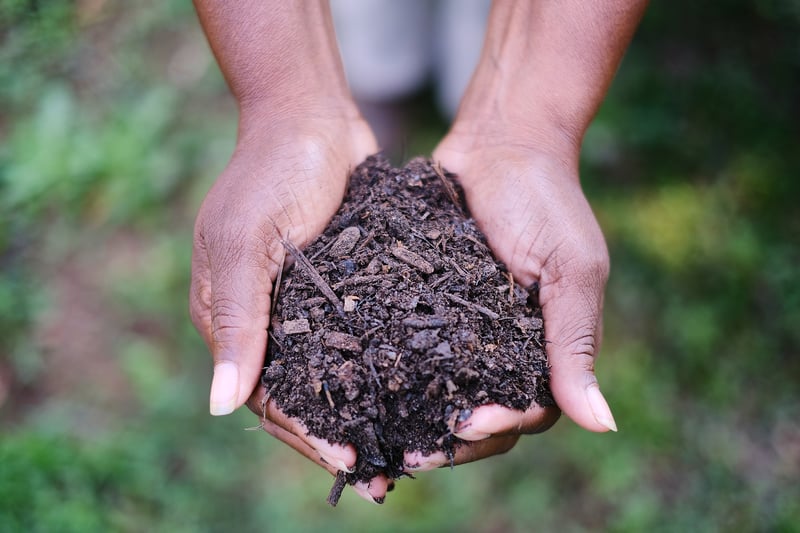
On the other hand, when kitchen scraps and other food waste are sent to the landfill, they release harmful greenhouse gasses like carbon dioxide and methane as they break down anaerobically.
Composted waste also produces a natural fertilizer that we can utilize in our gardens or houseplants to help our plants grow healthier, produce more beautiful blooms, and more prolific fruit.
Why Compost at Home?
Approximately one third of what we throw away can be composted, but currently only 6% of our food waste is composted. Reversing this trend would have a tremendous impact on our climate and the environment. Some of the benefits of composting include:
-
Composting reduces waste. It’s a simple way to protect the environment and lessens the amount of material that we're sending to our landfills.
-
Secondly, composting cuts down on methane emissions. When organic materials are composted properly in an aerobic environment, then the only byproducts are carbon dioxide and water.
-
Compost can also help improve soil health and lessen erosion. Healthy soils can also help sequester more carbon as an additional benefit for our climate.
-
It can even help conserve water, as adding compost to soil helps it to hold water, meaning less irrigation is needed.
How to Compost at Home in Georgia
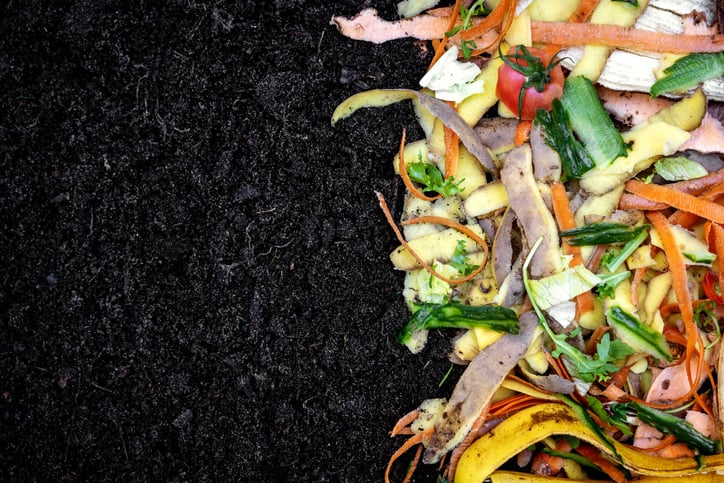
If you have outdoor space at your home, all you need to get started is a container to hold the pile--even an old trash can with holes drilled in it can be a great way to get started with composting. Once you have a bin ready, you can get started with just a few simple steps:
-
Save your fruit and vegetable scraps at home. These are the green materials that you put in your compost, and they're high in nitrogen. Diop likes to store his in the freezer. This way he can take fewer trips to the compost bin, and it also speeds along the composting process. As ice crystals form during the freeze-thaw process, cell membranes rupture so that food scraps are already partially broken down before they even make it to the bin.
-
Add carbon-rich materials, or browns, like leaves, grass clippings, wood chips, shredded paper, or cardboard. You want to achieve a 3 to 1 ratio of browns to greens by volume in your compost bin.
-
Turn, or thoroughly mix and stir your pile at least once per week. If you turn the pile frequently - every 3-5 days - you could have finished, ready-to-use compost in 60 to 90 days.
-
Keep an eye on the moisture level and temperature of your pile. Add water if it is drying out. It isn’t necessary to track the exact temperature, but advanced composters will aim for an internal temperature of 131 degrees, which kills off any pathogens and weed seeds in the compost.
Does Compost Smell or Attract Vermin?
We’re all familiar with the funky smell of rotten vegetables, but if managed properly, compost should have the same fresh, green smell you experience when you walk in a forest. If your compost does begin to smell bad, you want to make sure that your ratio of browns to greens is right. Turning and aerating your compost more frequently can also help. Sometimes smells are a result of those anaerobic microbes releasing alcohols or other chemicals that don’t smell very good.
As far as attracting animals, using an enclosed compost bin or tumbler should be enough to keep most wildlife out of your pile. You can also buy compost bins specially designed to keep vermin out if it becomes a problem. If you have an open compost pile, be sure to adequately cover the green material with browns to avoid attracting animals to your pile.
Alternatives to an Outdoor Compost Bin
If you don’t have the time or space to manage an outdoor composting system, then vermicomposting might be for you. Vermicomposting involves using worms to break down fruit and vegetable scraps inside a bin that can be stowed under the kitchen sink or in a basement.
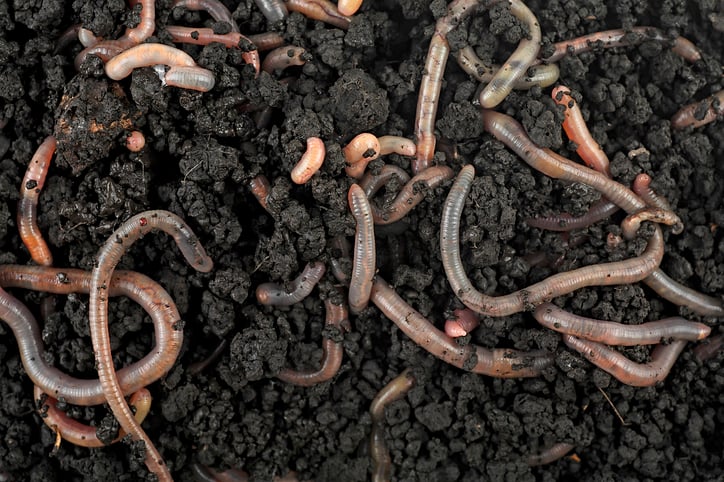
A growing number of Georgia cities and towns also have access to a compost pickup service like Compost Now. These services provide a bucket for your kitchen scraps, pick up your food waste on a regular schedule, and many also will bring back finished compost for your plants throughout the year.
>>Learn more about composting at home in Georgia
Reduce Food Production Carbon Emissions: How to Switch to a Plant-Based Diet
Dr. Keisha Callins opened her talk noting that, as a physician, she encourages the audience to “live a plant-powered life” simply for health reasons, but would also explore the many ways that a plant-based diet is beneficial for climate and the environment.
The Connection Between Climate Change and Food Production (h3)
Producing the food we eat every day creates emissions in a variety of ways, but a simple overview of the sources of the greenhouse gasses created in food production includes:
-
Methane is produced by cows and other ruminant animals like sheep and goats, as part of their natural digestion. Their manure also will release methane.
-
Nitrous oxide can be released by both organic and synthetic fertilizers.
-
Deforestation, which often happens around the world to grow livestock feed or make space for cattle ranches, can lead to increases in carbon dioxide in the atmosphere.
The simplest solution would be to remove beef from the typical American diet, which studies show would lower the carbon footprint of our diets by 25% by itself.
How to Take Action on Climate Through Your Diet
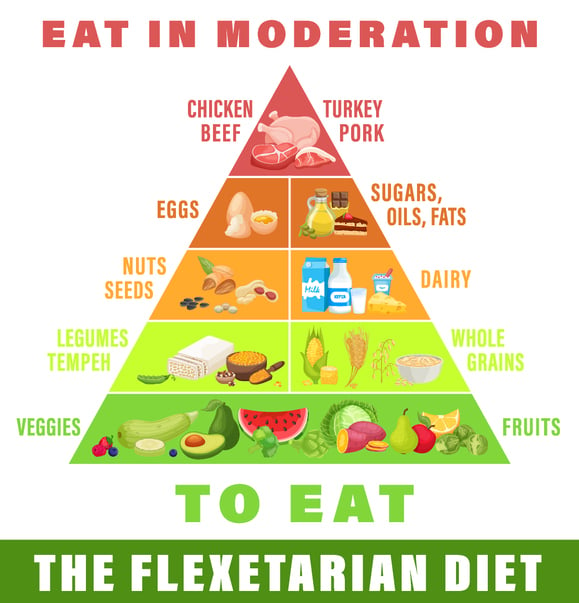
You don’t have to become vegan or vegetarian, or to completely give up the foods you love, in order to have an impact on emissions. Georgians can adopt a variety of ways of eating that can have a positive impact on climate:
-
Climatarian: rather than cutting out animal products entirely, this diet focuses on limiting meat, dairy and eggs: less meat, less heat.
-
Flexitarian: this is another approach to plant-based eating that places meat at the top of the conventional food pyramid, indicating that these foods should be eaten in moderation, but not cut out completely.
-
Planetarian: by focusing on the “why” of the food choices you make every day, this approach to eating less meat can add the motivation some of us need to make eating less meat meaningful, and feel like less of a sacrifice.
Plant-Based Diet FAQs
-
Will I get enough protein? Do you remember Popeye eating a can of spinach and his muscles got really big? It turns out that spinach is actually a really good source of protein. In other words, you can absolutely get adequate protein from plant-based sources. Beans, lentils, and nuts are also all excellent sources of high-quality protein.

-
Can a plant-based diet positively impact your health? Again, the answer is yes. Research shows that following a plant-based diet can reduce your risk of heart disease, diabetes, and even high blood pressure. Even if you are already experiencing one of these chronic diseases, changes in your diet can help and sometimes even reverse these conditions.
-
Will it cost more to follow a plant-based diet? Right now everything costs more than it used to, but there are a few easy ways to save money while also eating plant-based. Buying produce when it is plentiful, local, and in-season can help. Buying ingredients with a long shelf-life like beans, nuts, and seeds in bulk can also help you save on your grocery bill.
-
Do I need to take dietary supplements if I eat less meat? If you are going to become a vegan or vegetarian, then that's going to limit some of your normal sources of B12, for example. But if you're just reducing your meat intake and you're still incorporating foods like salmon that support or give you vitamin B12, then that's going to be covered.
-
Will I get bored following a plant-based diet? Not if you channel your creative energy! There are so many different ways you can prepare meals if you draw inspiration from cuisines from around the world. Take the opportunity to reach out to friends who are from different places and learn from their cultures about how they prepare different foods. You can also adopt a mix and match approach to meal prep. Let’s say you buy cauliflower one week. One day you might add cauliflower to your salad. Another day you might make some cauliflower soup, or you can do riced cauliflower. There are so many different ways you can eat the same vegetable.
Reasons to Go Plant-Based
Dr. Callins concluded by reiterating three strong reasons why we all should consider eating less meat and more plants:
-
Plant-based eating can preserve the ecosystem and the environment.
-
Plant-based eating can support a healthy lifestyle for you, your family, and your community.
-
Plant-based eating can make a difference for future generations. We only have one planet Earth: Eat like you live here.
>>Learn more about how to switch to a plant-based diet.
Bringing Climate Solutions Home in Georgia
Thank you to all of our presenters for providing a helpful and inspiring look at the many ways all Georgians can take action to scale everyday climate solutions at home and reduce their carbon footprint.
Are you feeling inspired to make a change in your own life? Be sure to check out our complete library of climate solutions toolkits to learn more about everything from composting to rooftop solar to home energy efficiency.
Don’t miss out when we publish new toolkits! Subscribe now to be notified as soon as they become available.


